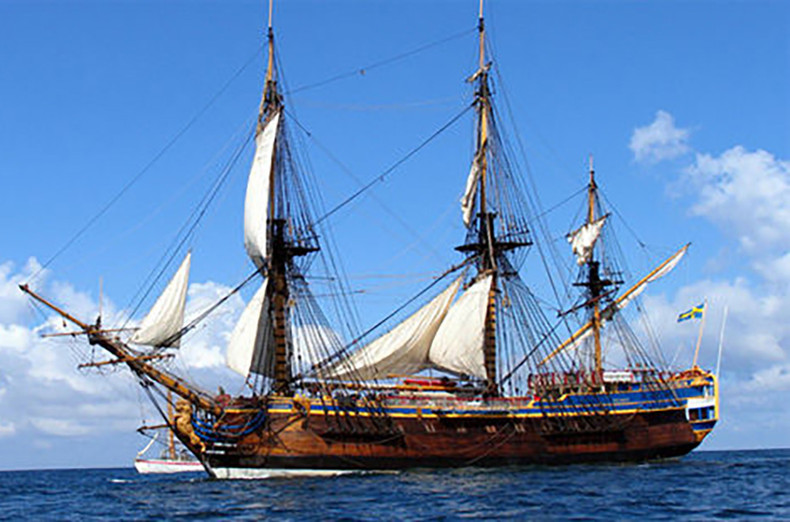One day in 1984, in the port of Gothenburg, Sweden, on the sea near Lighthouse No. 8, an expedition team seemed to be searching for something. The salvage operation had been going on for many days, but still nothing was found. Another fruitless return? The members of the expedition team themselves could not help but doubt it. Just when the team was about to give up and return, a response came from underwater: Under a pile of thick silt, a diver found what he had been looking for for many years - the legendary wreck of the Gothenburg. And a dusty history between Sweden and China nearly 300 years ago was also uncovered.
01. The Gold Rush to China
In 1648, the French and Swedish coalition defeated the Holy Roman Empire and signed the Treaty of Westphalia. Through the victory of this war, Sweden became the military hegemon of the Baltic Sea. At that time, the port of Gothenburg, Sweden's second largest city, became an important trade center in Europe. It allows the Swedish fleet to set sail from Gothenburg, sail straight to the Atlantic Ocean, and reach all parts of the world.
In the early 18th century, Europe was swept by a wave of China fever. For European merchants who have almost spread their footprints all over the world through the trade of the Age of Discovery, the ancient and mysterious China, which is said to be full of gold, has become a "treasure land" in their hearts.
Whether it is light and bright silk, ingenious porcelain, or sweet and delicious tea, in that era, they were regarded as symbols of status by Europeans. Under the trend of official monopoly on trade with China by European countries. More merchants targeted Sweden, which was still mainly engaged in agricultural production at the time and urgently needed to open up overseas trade markets, so they set extremely low tariffs.
Foreign merchants, led by Scotsman Colin Campbell, actively lobbied the Swedish government to issue a charter to establish the Swedish East India Company, which was exclusively engaged in trade with China. However, at that time, to reach China, thousands of miles away from Sweden, one had to cross the Atlantic Ocean, then go around the Cape of Good Hope, and finally pass through the Indian Ocean. In that era when modern shipbuilding technology had not yet been invented and only wooden sailing ships could be used as ocean-going transportation, it was extremely dangerous.
But this could not stop the Swedes who were fanatical about wealth and profit. As the saying goes, if there are no conditions, they must create them - they want to build stronger, larger and faster ocean-going ships. After obtaining the license, Campbell could not wait to build large merchant ships. With the support of the government, he quickly raised funds. On the other hand, the large influx of immigrants brought by territorial expansion also brought skilled craftsmen, technicians and inventors to Sweden, which greatly promoted the development of Sweden's shipbuilding industry.
Under the favorable environment of time, place and people, in 1738, in just 18 months, the most luxurious merchant ship in Sweden and even in the world at that time, the Gothenburg, was officially born! The ship is more than 50 meters long, 47 meters above the water, with 18 sails covering a total area of 1,900 square meters, a displacement of 1,300 tons, more than 140 crew members on board, and equipped with 30 cannons.
In January 1739, the "Gothenburg" began to sail to distant China, starting its legendary journey, and also officially connected the history of China and Sweden for the first time.
02. The Gothenburg Sets Sail
The Gothenburg, which traveled between China and Sweden, became the first envoy of trade and cultural exchange between the two countries. After going through risks, the Gothenburg finally arrived in China smoothly in June 1740. At that time, China was in the era of seclusion. Guangzhou stood out with its unique status of "one port for trade". Western merchants were only allowed to trade in the Thirteen Factories, which was very restricted. But this did not stop the enthusiasm of the merchants. They bought back porcelain, tea, silk and other goods that were most popular in Europe at that time in large quantities as much as possible.
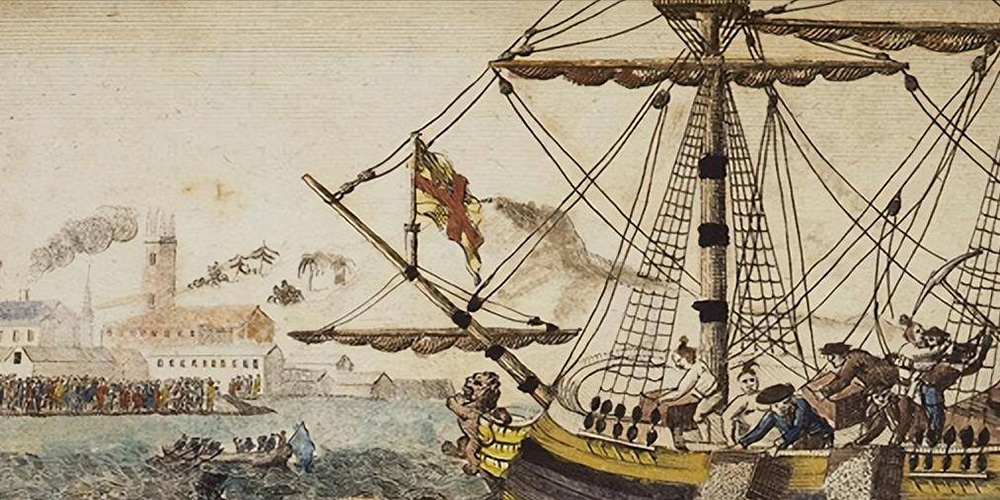
The Gothenburg stayed in China for a total of 3 months, until the cabin was gradually filled up and there was no place to put the goods before returning. In order to save space, the sailors could only sleep on the deck. However, all these hardships were worth it. With just one return voyage, the value of the goods brought back was equivalent to Sweden's annual GDP at that time. Driven by foreign trade, the entire Gothenburg was prosperous for a while.
03. History covered with the sinking of the Gothenburg
In January 1745, the "Gothenburg", which had completed its third journey, set off from Guangzhou to return home. However, this time, it became the "death journey" of the Gothenburg.
On September 12, the port of Gothenburg was surrounded by citizens who welcomed the return of the Gothenburg. Unlike this era, at that time, whenever a ship from the ocean returned, it was as grand as a festival for the citizens of Gothenburg.
When the ship was loaded with 700 tons of Chinese tea, porcelain, and silk, and sailed to the sea about 900 meters away from the port of Gothenburg, the crew who had been away from their hometown for 30 months could see the land of their hometown with their naked eyes, and even saw the villagers waving to greet them. However, at this time, an accident happened-the hull suddenly lost control and the bow touched the reef. Although the crew tried their best to save it, they still couldn't stop the world's most luxurious merchant ship from going to destruction.
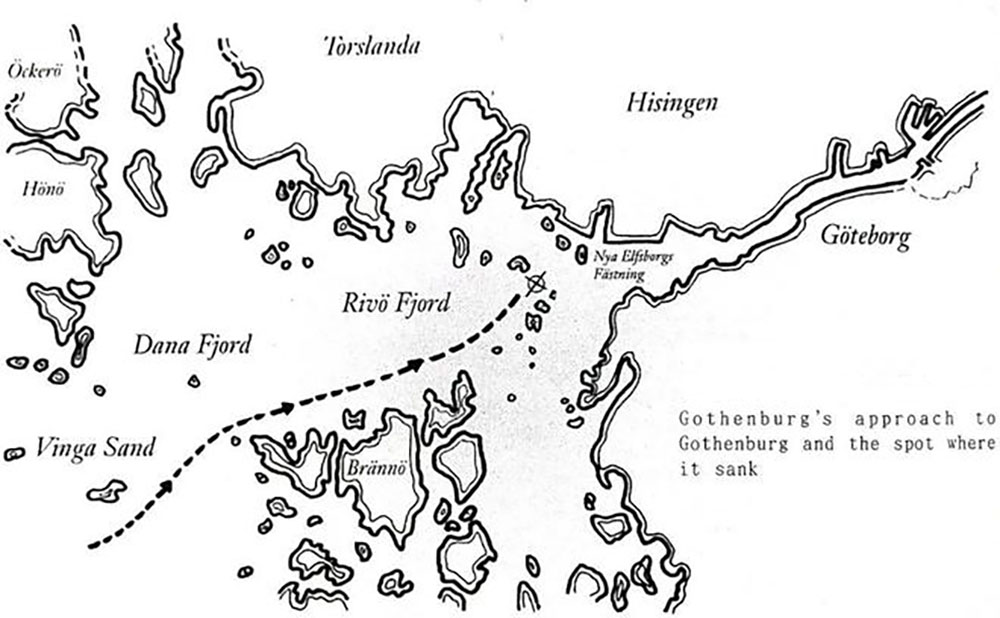
Fortunately, because the accident site was close to the sea, there were no casualties in the accident. At the same time, after timely salvage, a quarter of the cargo was finally saved, and this quarter of the cargo alone was enough to pay for all the costs of this journey and there was still a surplus. The huge profits brought by the Gothenburg are evident.
There was no accident in the voyage for many years, so why did it sink right at the doorstep? There have been many speculations about the cause of the sinking of the Gothenburg. Some people insist that the accident was caused by defects in the hull design and excessive loading of cargo. There are also conspiracy theories that the company wanted to defraud insurance premiums before the merchant ship was scrapped, or that the captain deliberately sank the ship because of a dispute over interests.
But no matter what the truth is, it has been sealed with the wreckage of the Gothenburg and has been sleeping on the seabed ever since. By the end of the 18th century, as Europe's understanding of China increased, the "China fever" gradually faded. And as European powers rose one after another, Sweden was further marginalized. The story of the Gothenburg was gradually forgotten until it was rediscovered more than two hundred years later.
04. Tea in the Gothenburg Shipwreck
At that time, the ship was fully loaded with 700 tons of goods from China and returned to Sweden. These goods included about 370 tons of tea, about 100 tons of porcelain, and silk, rattan and other commodities. We can't help but wonder, what kind of magical existence is the tea that once occupied half of the Gothenburg's entire ship cargo?
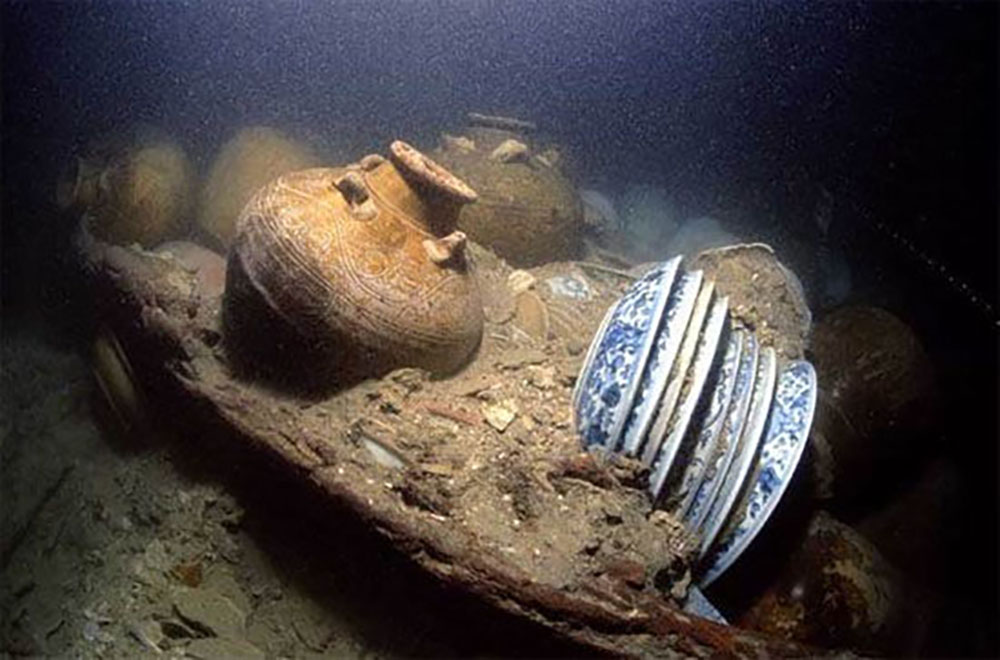 During the salvage of the Gothenburg, in addition to a large number of blue and white porcelain, the most exciting thing was that a box of 50 kilograms of tea was completely out of the water. This is a box of Wuyi tea exported from Guangzhou that year. Because these teas were pressed and sealed during the production and processing, and the local seawater had a low salt content, the tea sank to the bottom of the sea and was covered by the seabed mud and sand, and was not oxidized.
During the salvage of the Gothenburg, in addition to a large number of blue and white porcelain, the most exciting thing was that a box of 50 kilograms of tea was completely out of the water. This is a box of Wuyi tea exported from Guangzhou that year. Because these teas were pressed and sealed during the production and processing, and the local seawater had a low salt content, the tea sank to the bottom of the sea and was covered by the seabed mud and sand, and was not oxidized.
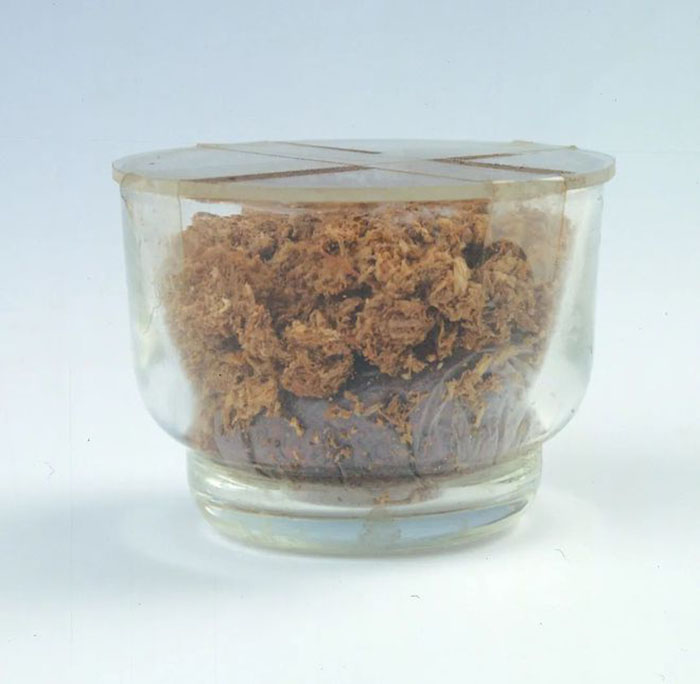
These teas that have been soaked in seawater for 240 years still have color and taste.
In the first half of the 18th century, the European country that imported the most tea was Britain, followed by other countries such as the Netherlands and Sweden. From 1722 to 1745, the proportion of Fujian Wuyi black tea in the total tea purchased by Britain each year was about 40% on average. The whole box of tea salvaged from the Gothenburg was Wuyi tea produced in the Wuyi Mountain area of Chong'an County, Fujian.
In fact, European merchants only distinguished between black tea and green tea, but in the accounts of the British East India Company in 1740, tea was subdivided into Wuyi, Gongxi, Xiaozhong, Songluo, etc. These different tea names should be named by the Chinese, and European merchants recorded them according to the Chinese names when registering accounts. According to the cargo list of the Gothenburg when it was loaded in Guangzhou at that time, the tea loaded on the Gothenburg was also subdivided into tea varieties, with 2,500 boxes of Bohea tea, including more than 500 boxes of Congou, 148 boxes of Souchoun, 10 boxes of Bing, and 10 boxes of other teas packaged in 780 small packages. Bohea, also known as Wuyi tea, is a type of black tea. It is a relatively common tea and is the most exported tea from Guangzhou Port. Congou, also known as Gongfu tea, is the most precious type of Wuyi tea. Souchoun, also known as Xiaozhong, is a type of black tea. Different from the previous three types of black tea, the last type, Bing, is a green tea produced in Anhui.
The detailed classification of tea varieties reflects the development of Guangzhou's export tea trade on the one hand, and the keen business sense of Guangzhou tea merchants on the other. The variety of tea varieties is mainly related to the fermentation and baking methods of tea.
05. Tea trade between China and Europe in the 17th and 18th centuries
In the early 17th century, the Dutch brought Chinese tea to Europe, and this magical oriental leaf gradually became a fashionable drink that swept Europe. When tea first entered Europe, the best-selling goods on foreign merchant ships should have been Chinese silk fabrics. However, due to the Qing government's restrictions on the export of raw silk and silk fabrics, coupled with the rise and development of the silk industry in Europe, the export volume of such goods dropped sharply, and eventually gave way to tea. With the increasing love of tea in European society, especially in Britain, the large amount of tea brought back by their East India Company and private merchants every year was far from meeting domestic demand, and due to the high taxes levied by Britain on imported tea, the price of tea remained high all the way, and ordinary people could not afford it at all. Therefore, smuggling tea to Britain became a profit channel for the East India Company of other countries. It can be seen from this that the large amount of tea purchased by the Swedish Gothenburg from the Guangzhou port at that time, in addition to partially meeting domestic consumption, the rest should also be resold to other countries to make a profit.
The fresh tea leaves picked must go through the processes of picking, frying and roasting to make raw tea, and this process needs to be completed in a very short time. At that time, tea farmers mostly made raw tea in a family workshop mode, so in many cases, the whole family had to go out together. Tea picking is usually done by women and children in the family. The subsequent processes such as tea frying, tea screening and boxing are undertaken by young and middle-aged men. Every tea season, tea vendors employed by tea houses will go directly to the tea-producing areas to purchase raw tea from tea farmers, and then bring it back to the tea house for fine processing. Then it will be transported to Guangzhou by tea merchants and finally sold to merchants.
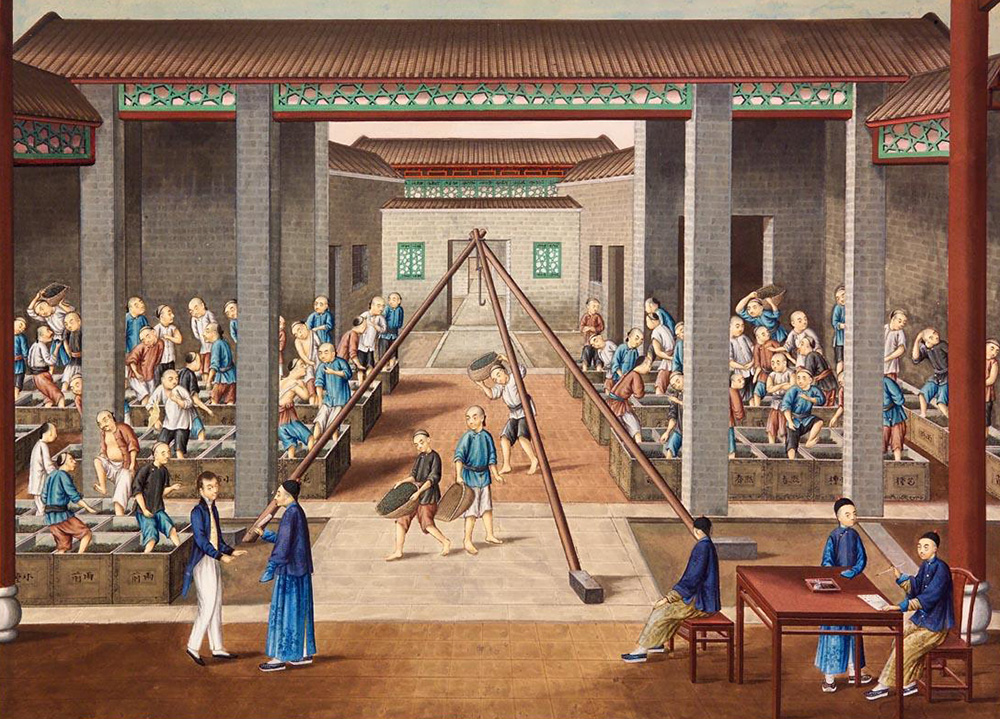 Foreign merchants can only buy the tea they like after selecting and placing orders through merchants. In addition to being processed locally in the tea-producing area of Chong'an, a considerable part of the Wuyi tea on the Gothenburg was produced in Wuyi Mountain. After a short period of sun drying, it was directly transported to Guangzhou for subsequent deep processing. Some Wuyi tea that has been processed in the place of origin will also be finally packaged in Guangzhou. Therefore, foreign merchants call Wuyi tea "Guangzhou Wuyi Tea".
Foreign merchants can only buy the tea they like after selecting and placing orders through merchants. In addition to being processed locally in the tea-producing area of Chong'an, a considerable part of the Wuyi tea on the Gothenburg was produced in Wuyi Mountain. After a short period of sun drying, it was directly transported to Guangzhou for subsequent deep processing. Some Wuyi tea that has been processed in the place of origin will also be finally packaged in Guangzhou. Therefore, foreign merchants call Wuyi tea "Guangzhou Wuyi Tea".
Tea received a warm response in Europe, and the journey to China was long and full of obstacles. Europeans even considered transplanting tea trees to Europe. Among them, Swedish naturalist Carl Linnaeus once tried this experiment in person. Initially, their experimental team thought of asking ocean-going merchant ships to bring them tea tree seeds, but during the voyage, the ship encountered a storm and the tea tree seeds were lost. In 1763, the merchant ship brought them another tea tree, but this time it was not properly preserved and was bitten by rats during the sea transportation. Although the plan to cultivate tea trees encountered difficulties continuously, Linnaeus's idea was never dispelled. Until later, he got some tea tree seeds and successfully grew tea trees. However, the steps of processing tea stumped him again, and tea was ultimately not produced. In any case, this also shows that after tea was marketed in Europe, as a new beverage, it had a huge impact on European social life.
06. The Rebirth of the Gothenburg
Since the founding of the People's Republic of China, it has maintained a friendly and mutually supportive relationship with Sweden. Sweden is also the first Western country to formally establish diplomatic relations with China. In the 1980s, the archaeological excavation of the Gothenburg was fully launched, and this merchant ship that once carried Chinese historical relics also attracted great attention from the Chinese side.
The excavation lasted for nearly 10 years. As the wreckage of the Gothenburg and the porcelain, silk, tea and other goods on the ship were salvaged one after another, the Swedish government decided to build a replica of the Gothenburg based on the "Gothenburg" as a prototype, and return to Guangzhou, China along the route of the ancestors to promote Sweden, develop friendly economic and trade relations between Sweden and China, and promote international exchanges. However, if only modern technology is used to build a new modern giant ship, the original meaning and connotation of this project will obviously be obscured.
Therefore, the basic concept of the Swedish side to rebuild the Gothenburg is: to use traditional methods and construction materials to be as close to the prototype as possible. Although this idea is beautiful and bold, when it comes to the specific construction problem, its complexity and difficulty are extraordinary, and it is considered an almost impossible task.
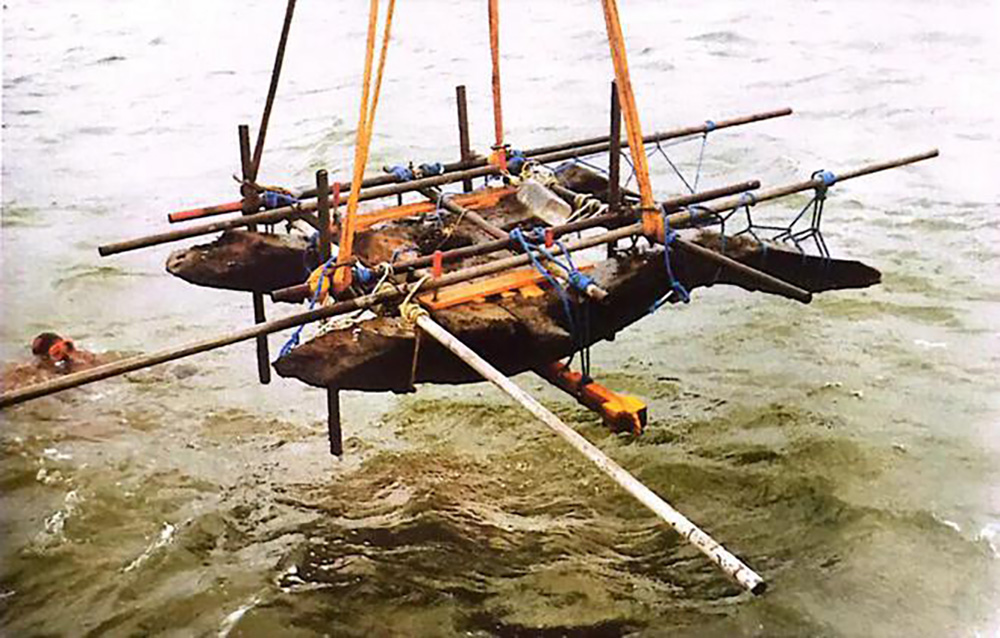
The lack of original drawings, lack of old materials, and the loss of old construction techniques made it much more difficult for technicians to restore an 18th-century sailing ship 1:1 than to build a modern 10,000-ton ship. At the same time, considering that the Gothenburg's re-departure is mainly for economic and cultural exchanges between China and Sweden, it is not necessary to risk life and death to trade like the merchants and in those days. Therefore, the manufacturer finally decided to use a combination of ancient and modern methods to restore the original appearance of the ancient ship as much as possible on the basis of ensuring that the ship meets modern navigation safety standards.
In 1994, the design draft of the wooden ship finally came out, and with the help of volunteers and sponsors, the shipyard used to build the new Gothenburg was also built from the empty mud. In June 1995, the keel of the Gothenburg antique ship was laid, and the Gothenburg New World Shipyard held a grand ceremony in traditional style. King Carl XVI of Sweden became the guardian of this project, which was enough to show the importance of the Swedish side. This huge project seems to have no profit prospects, but with China's growing international influence, unlike the journey that was purely for trade profits more than 200 years ago. Today, Swedes value the far-reaching significance and long-term benefits behind this project. China also attaches great importance to it, believing that this is an opportunity to promote relations between the two countries, and has paid full attention to and reported on the reconstruction project.
For the technicians, without the original drawings, they measured and inferred based on the hull remains, and combined with the logs and materials related to navigation at that time for reference. If the old materials and construction techniques at that time were not clear, they would refer to the physical objects and materials left behind. Experiment with various materials and techniques, and repeatedly study and compare. The hull was finally determined to be built with wood. About 70% is oak and 25% is pine. The ship frame is made of densely pressed pine boards to maintain hardness. The keel, stern, platform and other wooden parts are made of oak, and the deck and mast are made of pine. The ship is in accordance with relevant regulations and tries to hide modern power equipment in invisible places. It will only be used in critical situations to maintain the original appearance of the ancient ship.
The entire manufacturing process was more difficult than expected. It took 4,000 skilled craftsmen ten years to finally rebuild the Gothenburg replica of the antique merchant ship "New Gothenburg".
07. New Gothenburg sets sail again
On October 2, 2005, tens of thousands of Gothenburg citizens gathered at the port to witness the new Gothenburg's re-departure and re-take the "Maritime Silk Road". Hundreds of speedboats driven by citizens surrounded the New Gothenburg and sent it off all the way, creating a spectacular scene. On board, in addition to the captain, crew members and other professionals, more volunteers also spontaneously joined this journey to witness and experience this journey across time and space.
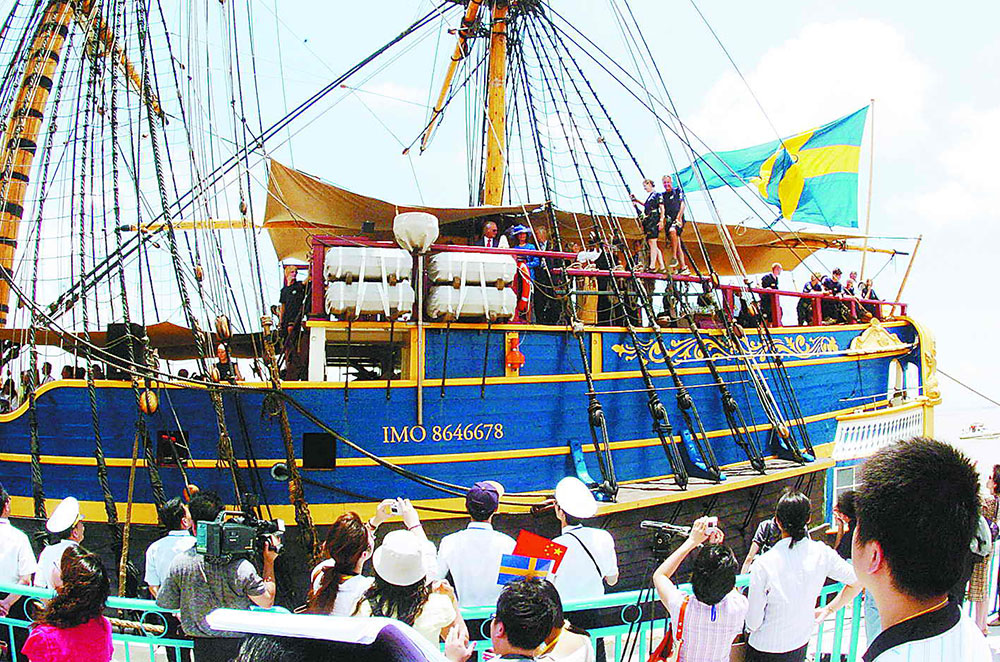
On July 18, 2006, the New Gothenburg sailed along the ancient route to Guangzhou, China, the birthplace of the ancient Maritime Silk Road. King Carl XVI of Sweden and the Queen boarded the Gothenburg and attended the ceremony in person. The Chinese side also held a grand welcome ceremony.
On June 9, 2007, after nearly two years of travel, the New Gothenburg successfully arrived in Gothenburg. The jubilant crowd on the dock and the crew on the "Gothenburg" waved their arms and cheered in response. Completed the unfinished mission of that year.
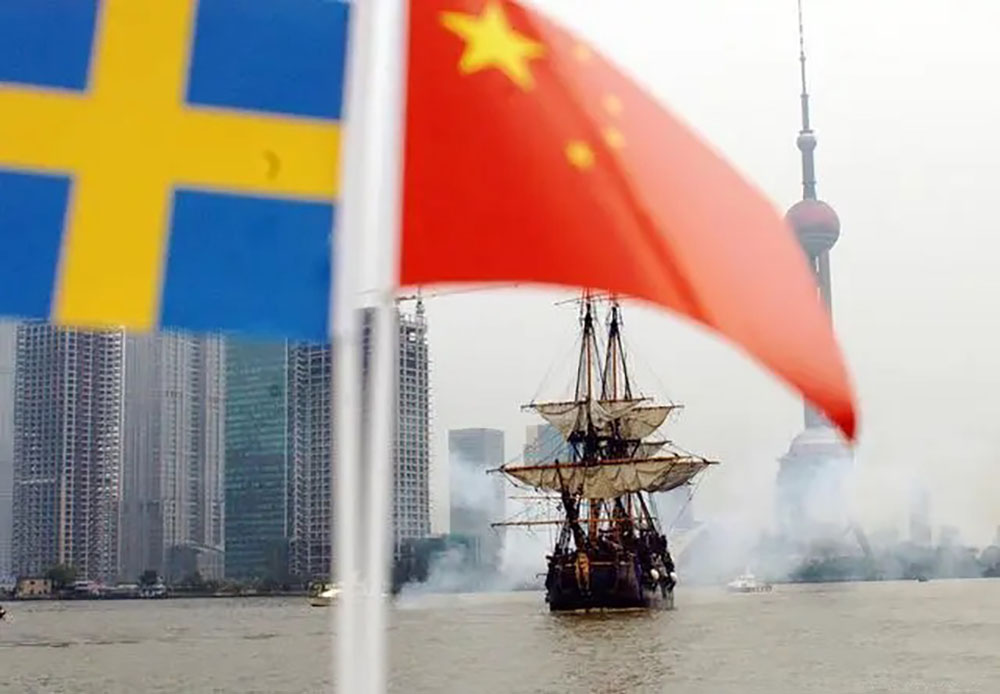
With the development of history, nowadays, this route spanning thousands of miles no longer has to face the difficulties and obstacles of an unknown journey, and no longer has to let the crew members risk their lives to trade. It has been given more symbolic meanings and serves as a witness to the friendship and mutual assistance between China and Sweden in this era. After nearly 300 years of time and space, a legendary story of an ancient ship came to an end here. But what followed was a new journey at the other end. The resumption of the "Gothenburg" replica ship and its success not only led people to pursue the long history of friendship between China and Sweden, but also opened a new journey of cultural exchanges and friendship between China and Europe.

